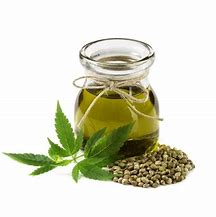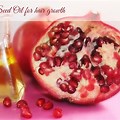Saturated and Unsaturated Fatty Acids
![]()
![]()
![]()
-
Saturated and Unsaturated Fatty Acids
- Everyone nowadays has heard of saturated, monounsaturated and polyunsaturated fats, but what does it all mean?
Carbon atoms can form single bonds as well as double bonds with each, other:
C-C single bond C=C double Bond- Compounds that contain only single bonds are said to be saturated whereas those with one or more double bonds are unsaturated, as the carbon atoms involved are not bonded to the maximum possible number of other atoms.
- Fatty acids that contain one double bond are said to be monounsaturated whereas those with more than one double bond are polyunsaturated.
- If the presence or absence of double bonds is taken into consideration the shorthand form for the fatty acids can be modified to give (commom names used):
| Stearic acid | C18:0 | (saturated no double bond) |
| Oleic acid | C18:1 | (unsaturated 1 double bond) |
| Linoleic acid | C18:2 | (polyunsaturated 2 double bonds) |
| linolenic acid | C18:3 | (polyunsaturated 3 double bonds) |
Table 2.3 Saturated and unsaturated fatty acids
- -indicating that stearic acid is a fatty acid which has 18 carbons in the chain and does not contain any double bonds, whereas oleic acid, which also has 18 carbons in the chain, contains one double bond.
- Saturated Fatty Acids-Saturated Fatty Acids- The so called 'hard' fats are mostly made up of triacylglycerols containing saturated carbon chains such as those based on palmitic and stearic acids.
- The most saturated of all the vegetable based products is coconut oil, which contains triacylglycerols based on caproic acid, a material that is also found in butter.
| Shorthand | common Name | Modern Name |
| C12:0 | Lauric | Dodecanoic |
| C14:0 | Myristic | Tetradecanoic |
| C16:0 | Palmic | Hexadecanoic |
| C18:0 | Stearic | Octadecanoic |
| C20:0 | Arachidic | eicosanoic |
| C22:0 | Behenic | Docosanoic |
| C24:0 | Lignoceric | Tetracosanoic |
Table 2.4 Common Saturated Fatty Acids
- Unsaturated Fatty Acids- Oils that are liquid at room temperature are based on Triacylglycerols containing high proportions of unsaturated acid units such as those found in palmitoleic and oleic acids.
| Shorthand | Common Name | Modern Name |
| C16:1 | Palmitoleic | 9-Hexadecenoic* |
| C18:1 | Oleic | 9-Octadecenoic* |
| C18:2 | Linoleic | 9, 12-Octadecenboic* |
| C18:3 | Linolenic | 12, 15 Octadecatrienoic* |
| C20:4 | Arachidonic | 5,8,11,14 Eicosatetraenoic* |
| C20:5 | Timnodonic | 5,8,11,14,17 eicosapentaenoic* |
- *The numbers indicate the position of the double bond in the chain.
- Table 2.5 Common Unsaturated Fatty Acids
- Unsaturated Fatty Acids- Oils that are liquid at room temperature are based on Triacylglycerols containing high proportions of unsaturated acid units such as those found in palmitoleic and oleic acids.
- Vegetable oils contain a high proportion (>80%) of unsaturated fatty acid units, which is why they are important for our health.
- The double bonds are not as strong as single bonds and introduce an element of weakness into a compound.
- Once opened up they can absorb other molecules for transportation elsewhere in the body and can also facilitate the natural digestive breakdown of the triacylglycerols.
- Human breast milk is designed to be easily digested. Analysis has shown that not only does it contain high levels of both vitamin E and triacylglycerols based on oleic acid, but it is also broken down via an alkaline reaction. Cow's milk, on the other hand, contains a larger proportion of saturated fatty acid units and 80% less vitamin E than human milk.
- Cow's milk is less easily digested as the process is carrie out by an acid reaction.
- Reference: Carrie Oils For Aromatherapy & Massage: Len Price with Ian Smith & Shirley Price
Articles-Most Read
- Home
- Contact Us
- Coconut Oil-2
- Absorption Ratings for Carrier Oils
- Cold Pressing Method
- What are Essential Fatty Acids
- Cherry Kernel Oil
- Fixed Oils and Skin Penetration
- Hempseed Oil
- Almond Oil
- Cocoa butter
- Camelina Oil
- Antibacterial Effects Of Carrier Oil
- Coconut Oil
- Lime Blossom Oil (macerated)
- Carrot Oil, Wild Carrot Oil (macerated)
- Apricot Kernel Oil
- Kukui Nut Oil
- Jojoba Wax
- Pumkin Seed Oil - Cucurbita maxima, C. pepo
- Passion Flower OIl (Macerated)
- Hydrocotyle Oil (macerated)
- Palm Kernel Oil
- Rapeseed Oil - Carrier Oil
- Nutrients
Who's On Line
We have 129 guests and no members online
Articles-Latest
- How to Make Homemade Olive Oil: A Step-by-Step Guide
- 20 Evidence-Based Aloe Vera Oil Benefits For Skin, Hair & Health
- Peanut oil - Cold pressed - Are There Health Benefits? How To Make
- What Are the Health Benefits of Black Seed Oil?
- Comfrey oil Infused
- Chamomile Flowers Infused Oil
- Calendula Flowers Infused Oil
- Arnica Flowers Infused Oil
- How To Make Herb-Infused Oils
- DIY avocado oil for healthy skin
- How To Make Coconut Oil
- 8 Benefits of Mustard Oil, Plus How to Use It
- SHOREA STENOPTERA SEED BUTTER
- Shea Butter- 7 Amazing Benefits Of Shea Butter
- Monoi Oil For Hair & Skin
- Mango Seed Oil
- Cohune Oil Is The Next Big Thing
- Brazil Nut OIl
- 7 Impressive Benefits Of Allspice
- Camelina Oil Benefits, Uses, and Side Effects




